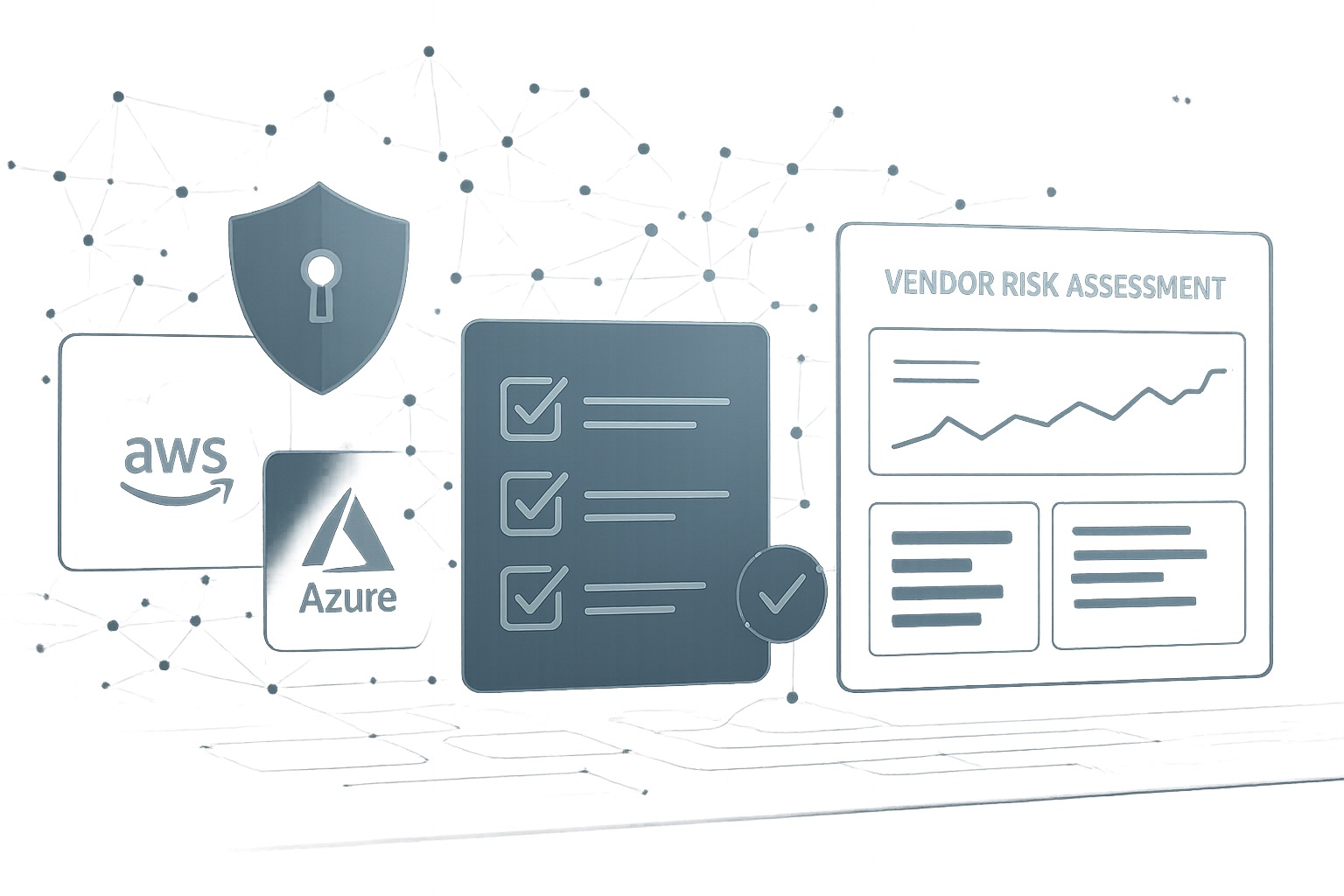

When organizations set out to achieve alignment to a framework such as SOC 2, ISO 27001, NIST, or CIS, they often focus on internal policies, controls, and employee training. Yet one of the most critical and often overlooked steps in compliance readiness is the vendor risk assessment.
If your business relies on third-party vendors, cloud services, or SaaS providers to handle customer, employee, or financial data, you are also relying on their security. A vendor risk assessment helps you identify who your critical vendors are, what data they process, and how secure those vendors really are.
A vendor risk assessment is the process of evaluating the security and reliability of the third-party services your organization depends on.
You start by listing out your key vendors such as cloud platforms (AWS, Microsoft Azure), payroll systems (ADP, Intuit), developer tools (GitHub), or CRM solutions. Then, for each, you determine factors such as (this is not an exhaustive list):
The result is a clear understanding of the risks each vendor poses to your organization and documented evidence that you have evaluated them, which auditors specifically look for during an assessment.
The importance of vendor risk assessments became clear again in late October 2025, when both Amazon Web Services and Microsoft Azure experienced major outages within days of each other.
AWS suffered a 16-hour global outage that disrupted more than 2,500 companies worldwide, including banking, e-commerce, and IoT systems. A few days later, Microsoft Azure experienced an outage that caused widespread service disruptions across Azure and Microsoft 365.
Even the largest cloud providers are not immune to downtime. These incidents highlight why organizations must understand their vendors’ resilience. If a vendor’s failure could interrupt your ability to serve customers, that vendor should be considered high risk, and you must document that assessment.
During your audit, examiners will want to see that vendor reviews have been completed within the observation period and that they include:
It is not enough to know your vendors are compliant; you need to prove that you reviewed their compliance, assessed their risk level, and decided how to manage that risk.
The most basic approach is to track vendors in a spreadsheet, record their data types, and assign risk levels manually. While that can work initially, it becomes cumbersome as the number of vendors grows and as audits demand traceability.
ProtechSuite simplifies this process by centralizing vendor reviews and automating reminders when assessments are due. Using built-in connectors, ProtechSuite can help identify your critical vendors, store their compliance evidence, and generate reports to demonstrate to auditors that management reviews were completed and documented on time.
Completing a vendor risk assessment is just the beginning. Once risks are identified, the next step is risk mitigation through a risk register and implementation of controls to address those risks. For example, you might require a vendor to enable MFA or encrypt backups before renewing your agreement.
We will explore both of these areas, risk registers and vendor management controls, in upcoming articles.
Vendor risk assessments are not just a box to check; they are a cornerstone of your compliance and governance program. They help you:
And most importantly, they ensure that when one of your vendors has a bad day, your business does not go down with them.
With ProtechSuite, you can automate and document this process, minimizing effort while maximizing audit readiness and peace of mind.







